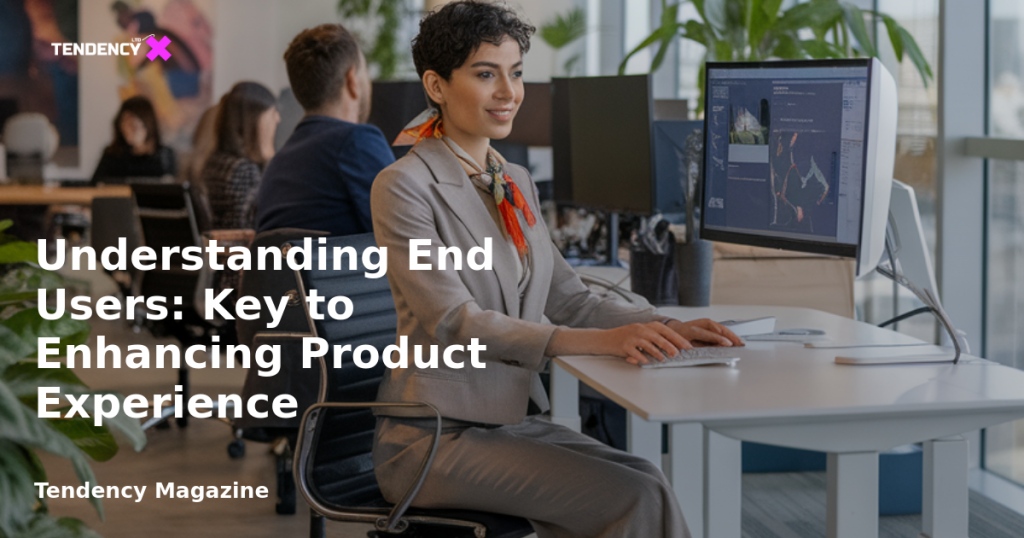Understanding End Users: Key to Enhancing Product Experience

Table of Contents
- Understanding the End User
- End User vs. Customer: Key Differences
- Strategies to Enhance the End User Experience
- Frequently Asked Questions About End Users
- Conclusion
Understanding the End User
The term “end user” refers to the individual who ultimately uses a product or service, regardless of whether they are the one who made the purchase. For instance, in a family setting, parents might buy toys, making them the customers, while their children are the actual end users. This distinction is vital in product development and marketing strategies, as understanding the end user’s preferences can lead to more effective product design and marketing efforts.
In eCommerce, the concept of the end user is just as significant as in technology sectors. By employing tools like customer segmentation, businesses can gain insights into the demographics and behaviors of their end users, allowing for more targeted and personalized marketing strategies.
End User vs. Customer: Key Differences
While the terms “end user” and “customer” are often used interchangeably, they represent different roles in the purchasing process. A customer is the entity that purchases a product, which could be an individual, a company, or a reseller. End users, on the other hand, are those who actually use the product. For example, a company may purchase software for its employees, making the employees the end users.
Understanding this distinction is crucial for businesses, especially those involved in selling to resellers or dropshipping companies, where the end user is not the direct customer. Feedback and behavior analysis can help identify who the end users are, providing valuable insights for improving product and service offerings.
Strategies to Enhance the End User Experience
1. Learn Who Your End Users Are
Developing a user persona is a powerful tool for understanding the end user. This involves creating detailed profiles based on real data and research, focusing on the end user’s lifestyle, preferences, and behaviors. Unlike buyer personas, which focus on the purchasing decision, user personas help businesses tailor their products to the actual users’ needs and desires.
For example, a seafood company might discover that their end users are not just interested in the product itself but also in the lifestyle associated with it, such as enjoying high-quality food in a coastal setting. This insight can inform marketing strategies and product development.
2. Help End Users Visualize Their Lives with Your Product
Marketing should go beyond highlighting product features; it should paint a picture of how the product fits into the end user’s life. This involves creating aspirational content that allows end users to see themselves using the product, enhancing their lifestyle. For instance, a company selling outdoor gear might market their products as essential for adventurous, nature-loving individuals.
By aligning marketing messages with the end user’s aspirations, businesses can create a stronger emotional connection, making it easier for end users to see the value of the product in their daily lives.
3. Identify Small Details That Delight
Enhancing the end user experience often involves small, thoughtful improvements that make a big difference. This could include frustration-free packaging, reliable tracking information, or simple product setup. These details contribute to a seamless and enjoyable experience, increasing customer satisfaction and loyalty.
For example, a company might include temperature monitoring in their packaging to ensure perishable goods arrive in perfect condition, providing peace of mind to the end user and enhancing trust in the brand.
4. Eliminate Pain Points for a Seamless Experience
Identifying and addressing pain points in the user experience is crucial for retaining end users. This involves understanding what frustrates users, what makes them abandon a product, and what might drive them to competitors. By addressing these issues, businesses can create a more frictionless experience.
For instance, if high shipping costs deter end users, businesses might consider incorporating shipping into the product price or offering free shipping thresholds, making the purchasing process more attractive.
5. Offer Comprehensive Help and Support
Providing excellent customer service is essential for supporting end users. This includes offering informative content, FAQs, and responsive customer support channels. By anticipating end user questions and offering solutions proactively, businesses can enhance the overall user experience.
For example, a beauty brand might provide tutorials on how to use their products effectively, ensuring end users achieve the best results and feel supported throughout their journey.
Frequently Asked Questions About End Users
- What is the difference between a customer and an end user?
An end user is the individual who interacts with and uses the product, while a customer is the one who purchases it. The customer might buy the product for someone else, making the end user a different person. - How do you create good experiences for end users?
Understanding how end users utilize the product and addressing any pain points are key to creating a positive experience. Tailoring offerings to meet the end user’s needs and preferences can significantly enhance satisfaction. - What is the definition of end users?
End users are the actual consumers of a product or service, regardless of who purchased it. They might receive the product as a gift or use a service provided by their employer.
Conclusion
Understanding and catering to end users is fundamental for enhancing product experiences and driving business success. By distinguishing between customers and end users, businesses can tailor their offerings to meet the unique needs of those who actually use their products. Through targeted marketing, thoughtful product design, and comprehensive support, companies can create memorable experiences that resonate with end users, fostering loyalty and encouraging repeat business.
2025 Tendency LTD. All rights reserved.

